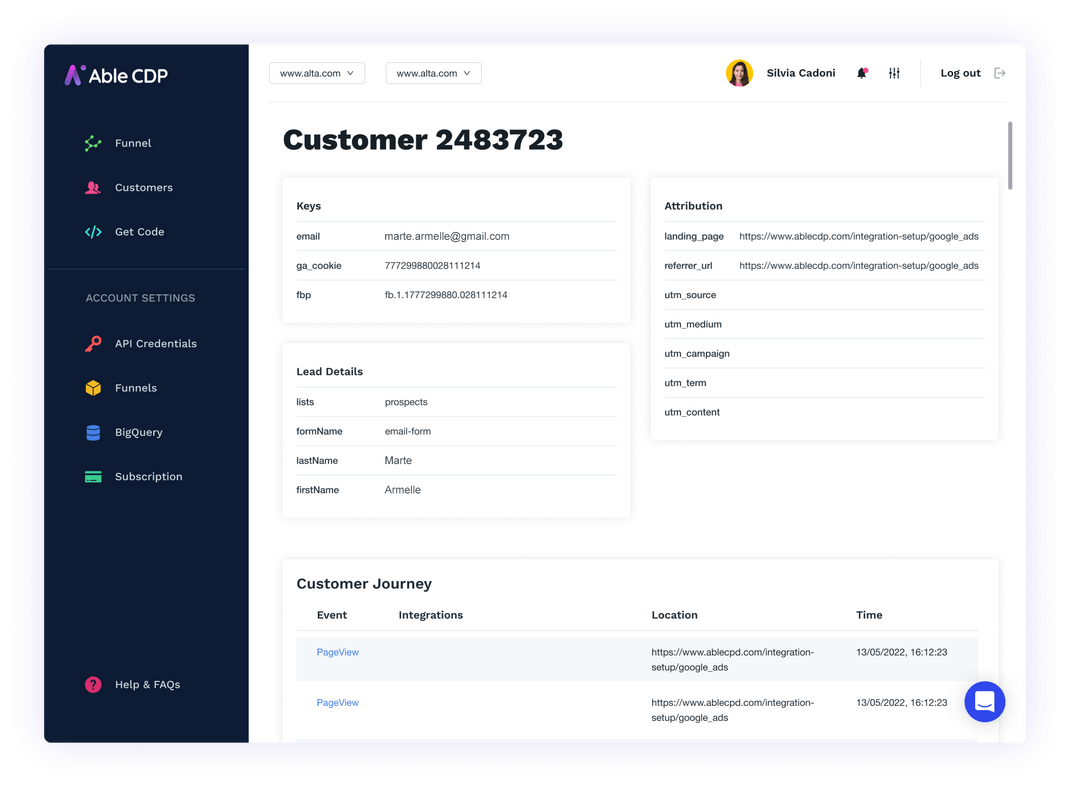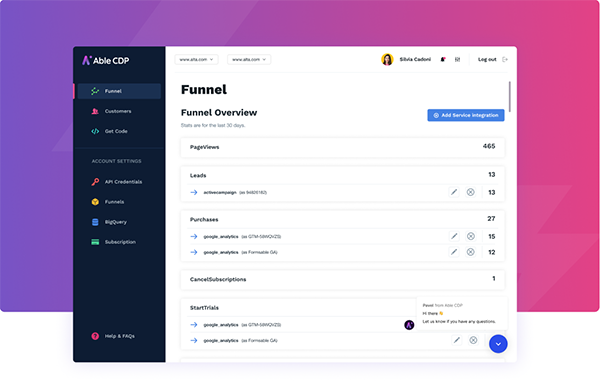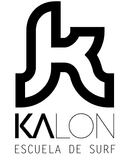B2B funnels present unique challenges to tracking and attribution. Conversions occur in different systems, each using a different customer identifier.
On the website
When visitors come to the website, their sources and paid click ids should be recorded in order to allow analytics and ad platforms to attribute future revenue correctly.
In a CRM
When a prospect completes a lead form, their CRM account should be associated with the website visitor source. Conversely, to accurately report revenue, qualified leads and closed won CRM deals should be attributed to the website visitor details.


















